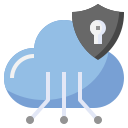
Risk Management in Cloud Migration Strategies
Risk management is a critical facet of successful cloud migration strategies, ensuring organizations can transition workloads, applications, and data to the cloud with minimal disruption and optimal security. Effective risk management involves analyzing potential threats, assessing vulnerabilities, and implementing measures to mitigate potential impacts throughout every phase of migration. As organizations move from on-premises systems to cloud environments, understanding and managing risks ensures compliance, business continuity, and the long-term reliability of cloud solutions.
Data security and privacy represent significant risks when migrating to the cloud. Sensitive information such as personal data, financial records, or proprietary company secrets may be exposed to vulnerabilities if not carefully managed. Threats like data breaches, unauthorized access, and non-compliance with regulations such as GDPR or HIPAA can have severe consequences, including legal penalties and reputational damage. It is essential for organizations to evaluate their security posture, understand where confidential data resides, and ensure robust encryption, secure transmission, and access controls are in place throughout the migration process.

Designing a Risk Mitigation Framework
Governance and Policy Implementation
Establishing strong governance and well-defined policies is foundational to effective risk management during a cloud migration. Clear policies dictate who has access to what resources, how data is handled, and what procedures must be followed in the event of an incident. Well-defined governance structures ensure accountability and oversight, reducing the likelihood of unauthorized actions and ensuring the consistent application of security protocols. Regular audits and updates to these policies are crucial as technology and regulatory environments evolve, maintaining alignment with best practices and organizational goals.
Technical Controls and Security Measures
Implementing robust technical controls is essential to mitigate risks associated with cloud migration. Measures such as end-to-end encryption, multi-factor authentication, and intrusion detection systems must be part of the cloud architecture from the outset. Monitoring tools that track activity and detect anomalies can help identify potential threats before they escalate. Automated tools for patch management, configuration management, and vulnerability scanning provide additional layers of protection, ensuring that security remains proactive rather than reactive throughout the migration journey.
Continuous Risk Assessment and Monitoring
Ongoing risk assessment is vital for adapting to emerging threats during a cloud migration. As the IT landscape and business requirements change, new vulnerabilities can arise. Establishing a continuous monitoring system allows organizations to detect and respond to risks in real-time, minimizing their potential impact. Regular risk assessments should involve stakeholders from IT, legal, compliance, and business functions, creating a cross-functional approach to risk that keeps the organization resilient and agile in the face of change.
Change Management and Communication
Effective change management ensures that everyone in an organization understands the reasons behind the migration, the expected benefits, and their roles in the process. Communication plans should outline how information about the migration, including risks and mitigation measures, will be shared. Training sessions, feedback forums, and clear documentation help to minimize resistance, build confidence, and empower employees to follow best practices, reducing the risks associated with human error and misunderstanding.
User Training and Access Management
User competency is critical to maintaining security and operational integrity during a cloud migration. Comprehensive training programs should be developed to educate users on new processes, tools, and security protocols specific to the cloud environment. Access management is equally important, involving the implementation of principles such as least privilege and role-based access control. Properly trained users who understand their permissions and responsibilities help mitigate insider threats and accidental data exposure, ensuring that controls are enforced consistently.
Leadership and Stakeholder Engagement
Strong leadership and active stakeholder engagement are necessary for aligning risk management efforts with business objectives. Executive involvement ensures that adequate resources are allocated, and that risk tolerance levels are clearly defined. Regular updates and participation from cross-functional stakeholders foster buy-in, facilitate coordination, and help anticipate organizational impacts of the migration. Ultimately, leadership sets the tone for a proactive risk management culture, making it an integral part of any successful migration strategy.
